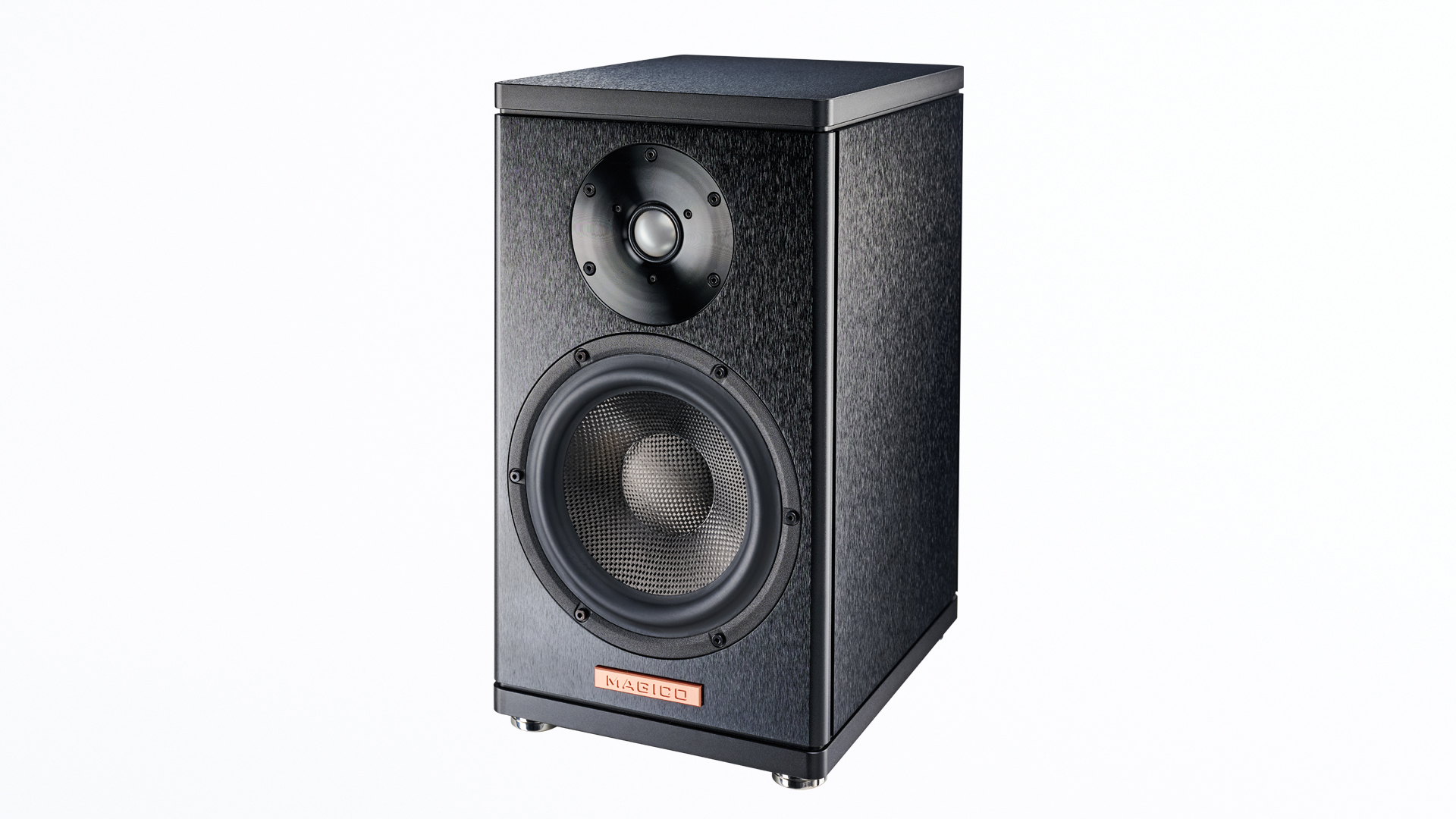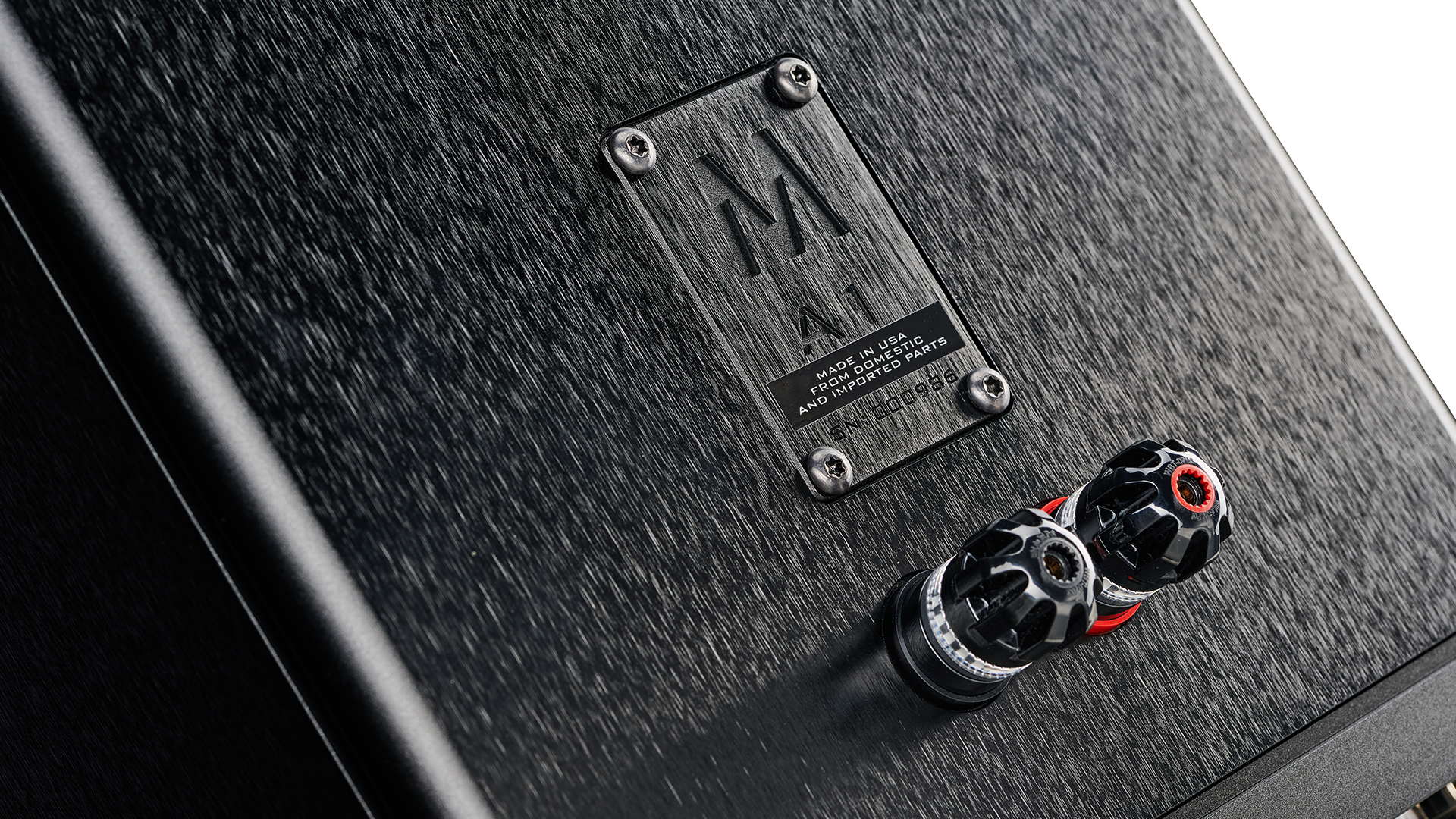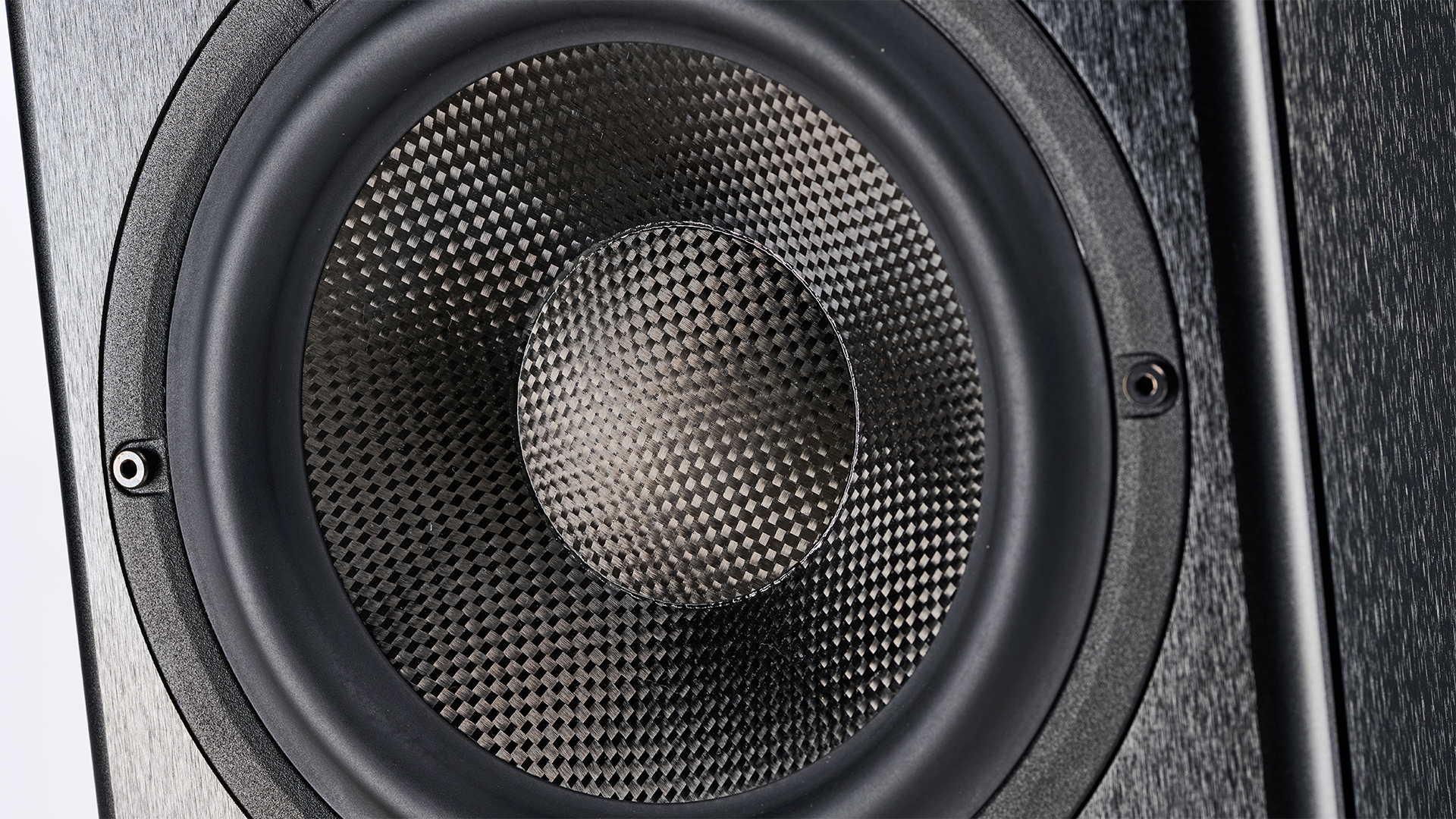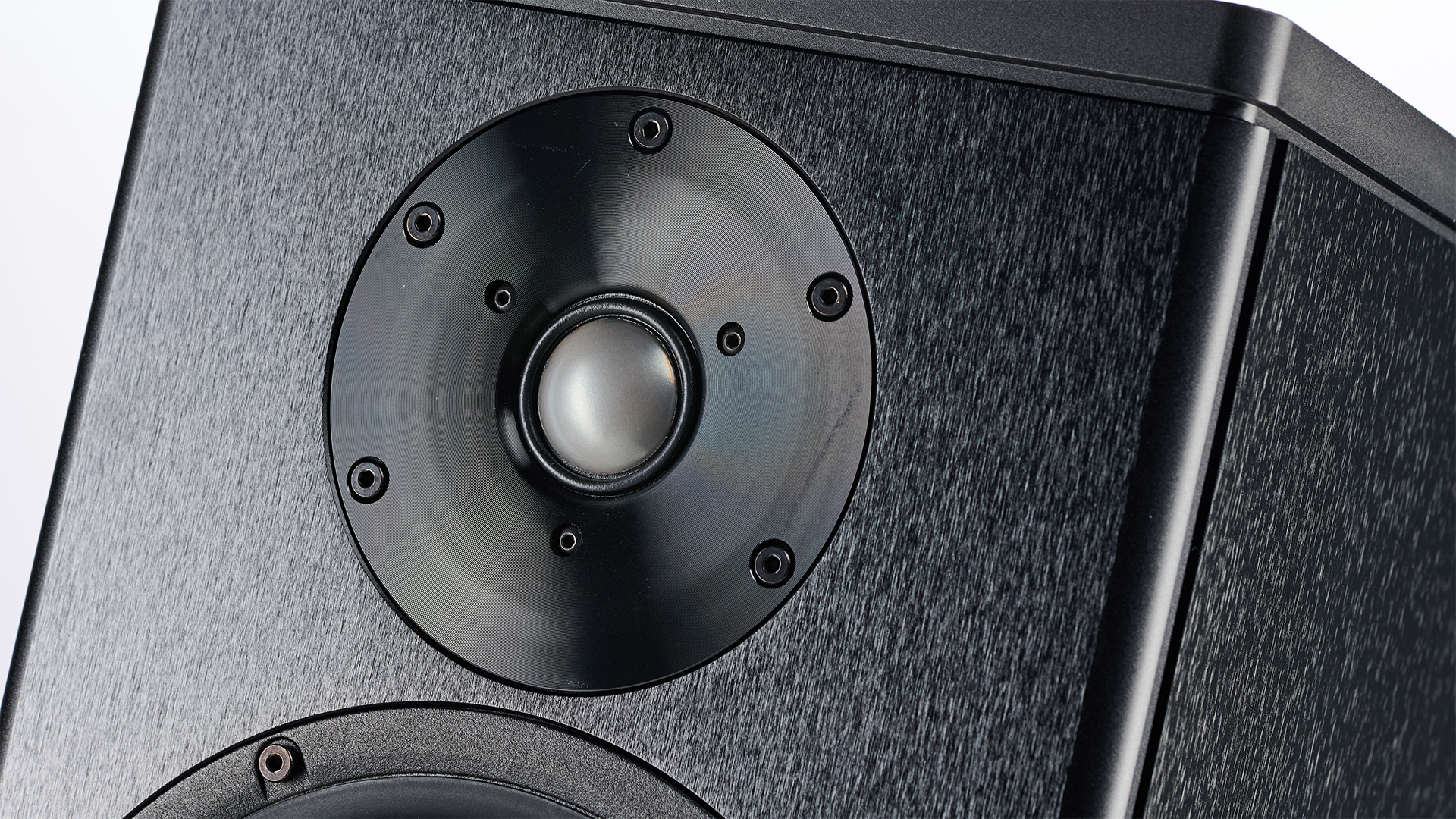What Hi-Fi? Verdict
The Magico A1 are among the most capable standmounters we’ve ever heard but are more about insight than entertainment
Pros
- +
Exceptional detail resolution
- +
Unforced, natural presentation
- +
Rock-solid build
Cons
- -
Unvarnished presentation can lack drama
Why you can trust What Hi-Fi?
The A1 are currently the most affordable speakers Magico makes. They’re also the company’s only standmounters. But neither of these things stop these hefty compact boxes from offering a proper dose of what has made the brand so successful since its beginnings in 2004.
Build

These Magico speakers don’t look particularly special compared to class rivals – visually they lack the warm charm of the Sonus Faber Electa Amator III while falling well short of the cheaper Bowers & Wilkins 805 D4 when it comes to looking all high-tech and modern. Still, we find there’s something mighty appealing about the A1’s brutalist black appearance. It implies a no-nonsense approach to engineering; one that strongly suggests performance was more of a priority than any cosmetic considerations.
The accompanying photos may not make it clear, but this Magico is not a conventional design with a fancy wooden cabinet. Its enclosure is made of 9.5mm-thick 6061-grade aluminium panels that are further reinforced by strategic aluminium bracing. The result is a 22kg speaker that feels immensely dense and solid.
The A1’s aesthetics may be comparatively plain, but there’s no denying the quality of the overall build and the excellent finish. Despite being the first rung of Magico’s range, this is still a pricey proposition – and the way they’re put together certainly lives up to that hefty price tag.

Drivers 28mm beryllium dome tweeter, 165mm graphene Nano-Tec midbass
Sensitivity 84dB
Impedance 4ohms
Frequency response 35Hz–50KHz
Dimensions (hwd) 396 x 216 x 305mm
Weight 22kg
The Magico A1 are a two-way design. Their 28mm beryllium-dome tweeter shares much with the high-frequency unit used in the company’s more upmarket M-Series offerings but does without the ultra-expensive diamond coating. The carefully developed neodymium motor system is claimed to offer low distortion coupled with wide-ranging dynamics. High-power handling is also said to be a strength.
The A1’s 16.5cm mid/bass is also a distinctive unit, with a carbon fibre cone laced with a layer of XG Nanographene that's claimed to offer the optimal amount of damping and stiffness. Care has been taken with the chassis to allow a free flow of air, so maximising dynamics. Elsewhere, the motor system has a relatively large 39mm titanium voice coil and a carefully honed design, with ‘extra-large’ magnets resulting in greater accuracy and good power handling.
Compatibility

Unlike most rivals, and the majority of speakers on the market for that matter, the A1 are a sealed-box design. There’s no reflex port or any other mechanism to augment that high-tech mid/bass unit’s low-frequency output. Given the Magico’s sub-40cm tall stature and modestly sized mid/bass unit, it’s fair to assume that they’re not going to be the first choice for someone who prioritises bass extension and power above all else.
On paper, there’s invariably a hit on sensitivity by not going for a ported design. The A are rated at 84dB/W/m, which is on the low side and, coupled to an impedance of 4ohms, suggests that you’ll need an amplifier with a bit of grunt to make them work at their best.
Make sure that amplifier is a good one, though. Power in itself is not enough of a talent to make these speakers sing. They’re highly revealing, so if you want to hear the Magicos in full flow you’ll need a suitably talented system.
Our sources are the Naim ND555/555 PS DR music streamer and a Technics SL-1000R turntable with a Kiseki Purpleheart moving coil cartridge attached. Amplification duties are mostly performed by our reference Burmester 088/911 MKIII pre/power combination, but Magico’s UK distributor Absolute Sounds also supplied a Krell K300i integrated, which we use as well.
The performance of any standmounters is hugely influenced by the quality of its support and these speakers are no different. We were supplied with open wooden-framed stands from Hi-Fi Rack and these work well enough, but there’s plenty of choice out there so it makes sense to try a few alternatives, as well as use the selling dealer’s experience, when the time comes to buy.
It also pays to take a bit of time positioning the A1. It’s always tempting to put small speakers right up against a wall or, even worse, in the corner of the room to make sure that full advantage is taken of the speakers' modest proportions, but that’s not the right thing to do here. We end up with the A1 almost a metre into the room and angled in so that they cross a little behind our listening position. This way we get a huge, expansive soundstage and a pleasing tonal balance.
Sound

The laws of physics are pretty unyielding, so it’s impressive that Magico’s engineers have managed to make these speakers sound impressively solid and authoritative – all the more so because these standmounters certainly don’t generate the kind of bass depth that’ll fool anyone into thinking that they’re listening to anything significantly larger than the A1 actually are. But that’s not a problem, because it’s the quality that matters. The A1’s low frequencies are weighty enough to convince, and are also taut, tuneful and beautifully integrated into the presentation. Most rivals that deliver lots of bass usually fall short in one of these areas.
Aside from that lovely, solid bass, the Magicos have a presentation that’s as balanced and insightful as they come. There’s so much detail here, letting us hear far more of the recording than most alternatives. We’re more aware than usual of the concert hall acoustics as we listen to Arvo Pärt’s Tabula Rasa. The space around the instruments in the soundstage is better defined than through most alternatives, and their characteristic textures are superbly rendered. No part of the frequency range attracts undue attention, leaving us to focus on the music.
Despite their compact dimensions, these speakers are able to convey the scale of the event brilliantly. Within the limitations set by size and science, they deliver the piece with an astonishing amount of confidence. As the music builds, we’re aware of the A1's unshakable sense of composure; such is their level of control that they never sound stressed even when pushed to high volumes. Dynamic shifts are delivered with verve, though when judged by price rather than size standards it’s not too hard to buy an alternative that has more in the way of absolute punch and attack.
Similarly, when we switch to Bruce Springsteen’s High Hopes set we’re aware that the Magicos are surefooted with rhythms rather than particularly enthusiastic about producing results that really charge along. Still, they sound musically cohesive and manage to capture enough of the energy in The Boss’s performance to keep us listening. The longer we listen, the more we’re impressed that these speakers aren’t about showboating. They don’t hype up the sound to be more exciting or entertaining than it is. If the original recording is good then that will shine through. And if it isn’t you’ll know all about it, despite the speakers having more than enough refinement to prevent things from sounding worse than they should.
Verdict

If you’re after standmounters that give you the unvarnished truth about the signal they’re being sent, these Magicos should be right at the top of your shortlist at this level. The A1 are even-handed and magnificently detailed yet somehow also manage to be understated and unforced. In our ideal world, we’d want them to do all these things and still manage to sound a bit livelier – enthusiastic, even. But to be fair to them we’ve yet to come across an alternative that does it all, and in the Magico A1’s areas of strength, there’s little else that comes close for the money.
SCORES
- Sound 5
- Build 5
- Compatibility 4
MORE:
Read our review of the Sonus Faber Electa Amator III
Also consider the Bowers & Wilkins 805 D4
Read our Wilson Benesch Precision P1.0 review
What Hi-Fi?, founded in 1976, is the world's leading independent guide to buying and owning hi-fi and home entertainment products. Our comprehensive tests help you buy the very best for your money, with our advice sections giving you step-by-step information on how to get even more from your music and movies. Everything is tested by our dedicated team of in-house reviewers in our custom-built test rooms in London, Reading and Bath. Our coveted five-star rating and Awards are recognised all over the world as the ultimate seal of approval, so you can buy with absolute confidence.
-
TenTonTarantula It would be good to see WH review these uber expensive products through the lens of their price more...especially since they give everything 4 or 5 stars already. Sure a 10k speaker sounds good, but come on, do a bit more work than that. How does it compare to the myriad £800 speakers you also say are faultless...surely somewhere between that profused performance equivalence and seismic price differential there must be (shock horror) room for actual criticism?Reply -
Symples "Entry level" :DReply
I would have expected these to be reviewed in the 'Temptation' section
How much is the extra costs of stands? (I am thinking of buying a pair for my rear surrounds)

